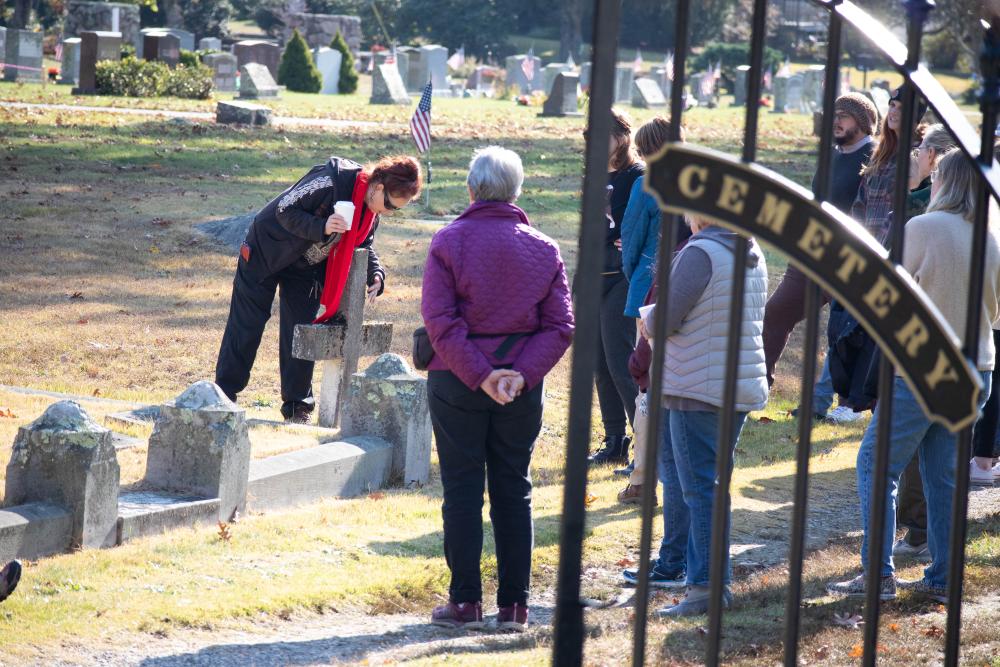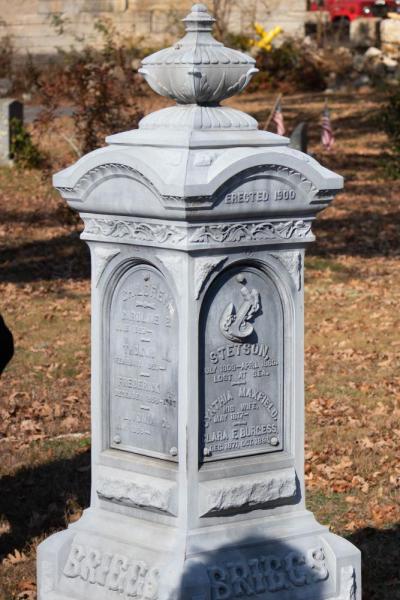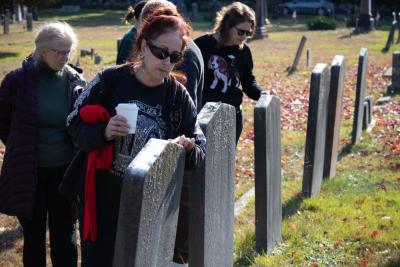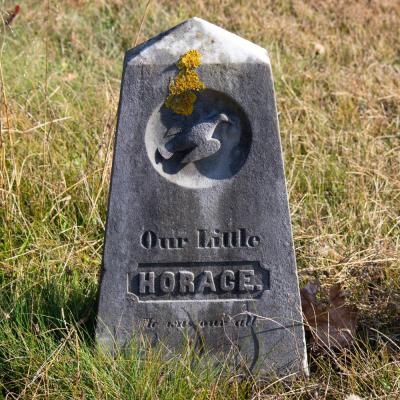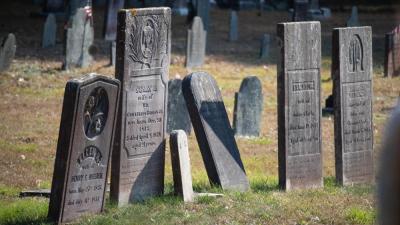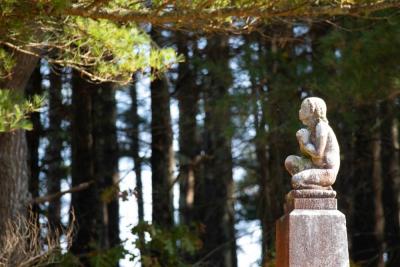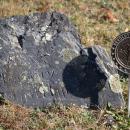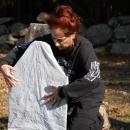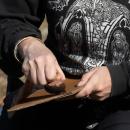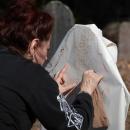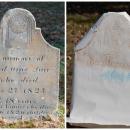Gravestone Girls guide guests through Marion cemetery
MARION — Graveyards, cemeteries, churchyards. No matter what you call them, Brenda Sullivan knows all about them.
Sullivan runs Gravestone Girls, a company that takes rubbings of gravestones and teaches classes about the history and art of gravestones.
On Sunday, Nov. 5 , Sullivan used that knowledge to lead a tour through Marion’s Evergreen Cemetery as a part of a program sponsored by the Elizabeth Taber Library.
From beloved townspeople who recently passed to Revolutionary War captains who helped win America’s independence, everyone’s gravestone tells a story, said Sullivan.
Sunday’s tour began in the newest section of Evergreen Cemetery that reflects modern tastes and technology.
“We’re modern people, this is what we are currently doing for memorialization. We’re using materials like granite because of industrialization at the end of the 19th century,” said Sullivan. “We can use this material … because we have the technology.”
Sullivan said that granite allows for more detailed inscriptions including pictures of the deceased and engravings reflecting hobbies, religious symbols and more.
According to Sullivan there was a period of time from the beginning of the 1900s to about 1980 where “there’s not a lot happening on our tombstones.”
“We’re not saying a lot about who we were and what we did while we were here,” said Sullivan, who noted that beginning in 1901, after the death of Queen Victoria, landscaping and aesthetics in cemeteries became more simple.
“So when we simplify in the land of the living, we simplify here as well,” said Sullivan. “We want to reclaim that very busy Victorian landscape and make it more pastoral, make it easier on the eye.”
As Sullivan brought the group to older parts of the cemetery, gravestones became more intricate.
Along the tour she pointed out the Briggs family marker, erected in 1900, as a prime example of a “white bronze” gravestone. White bronze, explained Sullivan, is neither white nor bronze, but rather a blueish-gray zinc that can withstand erosion, plant growth and harsh weather.
White bronze gravestones were “very customizable,” said Sullivan.
The Connecticut-based Monumental Bronze Company started manufacturing white bronze gravestones to directly compete with stone monument companies, she said. However, during World War I, the company’s factories traded gravestones for munitions to help with the war effort and went out of business following the conflict.
Capturing a piece of history
In the oldest part of Evergreen Cemetery, Sullivan sat down with her art supplies to lead a workshop on the proper way to take rubbings of gravestones.
Taking a rubbing involves placing a piece of paper over a gravestone and lightly applying paint or wax to “trace” the stone’s carvings.
She noted that the first step in taking gravestone rubbings is to get permission from the municipality that owns the cemetery. On Sunday, Sullivan had the full blessing of the Marion Cemetery Commission.
Then, using a plastic garbage bag and butcher’s paper, she made sure that nothing would get on the gravestone. Finally, she used a balled-up nylon stocking to apply her paint so as to not apply too much pressure to the stone.
“It’s like watching a ghost materialize,” said Marion Cemetery Commission member Helen Hills as Sullivan’s rubbing appeared on paper.
Following her demonstration, Sullivan invited others to try their hand at gravestone rubbing.
Marion residents Jennie Johnston and Zack McConkey went on Sunday’s tour to gain an “appreciation” for their local cemetery and to learn how to take a gravestone rubbing “properly and not leave any kind of lasting trace.”



